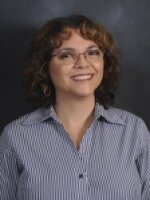In 2007, Baptist Health Care teamed with renowned orthopaedic surgeon Dr. James Andrews to establish the Andrews Institute for Orthopaedics & Sports Medicine in Gulf Breeze. This month, the institute is marking its ten year anniversary while also looking ahead to its next ten.
The Andrews Institute was built largely on the reputation of Dr. Andrews, who was already well known for performing orthopedic surgery on high-profile athletes such as Charles Barkley, Roger Clemens, and Pensacola’s Emmitt Smith and Jerry Pate.
But, from the very beginning, the founders had plans for a world-class facility that would extend far beyond star athletes in the college and professional ranks.
“We would like to figure out how to prevent the injuries that we see in all of our youth sports and you know you’ve got lots of those going on in this community,” said Dr. Andrews at the official announcement back in November of 2000.
“Just to preface why it’s so important, it’s been a 10-fold increase in youth injuries and youth sports since year 2000. Something has to be done about it.”
By this point in 2004, plans for the orthopedic and sports medicine center had been in the works for about a year.
Andrews credits the vision of former Baptist CEO Al Stubblefield, whose team made two trips to Birmingham to make their pitch.
“By the way, I was completely amazed at this point because a lot of people talk about doing things and it’s talk and that’s the end of it,” Andrews said. “But here they come back for a second meeting up in Birmingham.”
That was Andrews, reflecting on the origins of the Institute at a recent tenth anniversary event.
Once the idea began to take hold, Andrews credits pro golfer and U.S. Open champion Jerry Pate. Pate, who was a frequent surgical patient and friend, helped secure private and state funding for the project.
Ground was broken in 2005 and with just a few physicians on staff, the facility opened in its 85-thousand-square-foot clinical facility in 2007.
“What started with Dr. Andrews, Dr. Hackel, and Dr. Ostrander then, today equates to over 30 orthopaedic providers of some ilk in our community today that are part of the institute,” said Scott Raynes, Senior Vice president of Baptist Health Care, and President of Baptist Hospital.
The campus has now grown to 127,000 square feet, with six departments and numerous medical specialties offered on-site.

“With that said, we do in excess of 6,000 orthopaedic surgeries within our health system, the majority of them done here on this campus,” said Raynes, referencing one aspect of the institute’s “robust and rich” presence in the community and region.
As part of their Sports Medicine Outreach, Baptist and the Andrews Institute have performed 20,000 free school sports physicals since 1997.
Further, Dr. Steve Jordan, orthopaedic surgeon and sports medicine specialist, points to another highlight of their first ten years is the sports medicine and athletic training services now provided across the region.
“Baptist Hospital and Andrews Institute now employ 28 athletic trainers and cover all the public schools in Escambia, SR, Okaloosa and Walton counties; quite an achievement,” said Dr. Jordan, adding that a new position recently was approved for a regional sports medicine liaison. “This will expand our coverage even further east into the Jackson County and Panama City area.”
Looking to the next 10 years, the Andrews Institute is leading the way towards the future of orthopaedics and sports medicine, most recently (in 2106) establishing the Regenerative Medicine Center. The staff there is working on ways to improve surgical techniques currently used to repair damaged cartilage.
“Currently, on our campus we offer two regenerative medicine technologies. Platelet rich plasma is the first that’s been around for quite some time,” said Dr. Adam Anz, an orthopaedic surgeon and medical director of clinical and biologic research at the Andrews Research & Education Foundation. He says they’re also offering bone marrow aspirate.
“Similar to when we get blood from your veins, spin it in a centrifuge and take a layer that’s important for healing, we can stick a needle under your bone marrow, take some of your bone marrow out, spin it and get the layer that has stem cells and use it for orthopedic purposes, too,” Anz said.
The Institute is currently involved in a number of studies involving the further development of stem cell technology.
Dr. James Andrews explained that their research is now on the long path to federal approval.

“We have to deal here under the auspices of the Federal Drug Administration (U.S. Food and Drug Administration) to number one make sure we’re not doing harm,” said Dr. Andrews, pointing out that the process is also expensive. “You couldn’t believe how expensive; that project he’s doing upstairs that he was talking about with the Apheresis machine is a multi, multi-million dollar project.”
Despite many challenges, Andrews believes the research and education underway at the Institute is the key to their future and the future of sports medicine. And, he’s confident that stem cell development will be the ‘biggest revelation’ in the field since the arthroscope in the 1970’s.
Personally, Andrews continues his university affiliation with Alabama, Auburn, and Troy; and with the NFL Washington Redskins. At 74 years old, he has no plans to slow down any time soon, noting the work he still wants to do.
“Prevention for me right now in youth sports is the one thing I’m passionate about. It’s the one thing I’m trying to conquer in the twilight of my career. But, believe me, it’s a big uphill battle, a big battle.”









